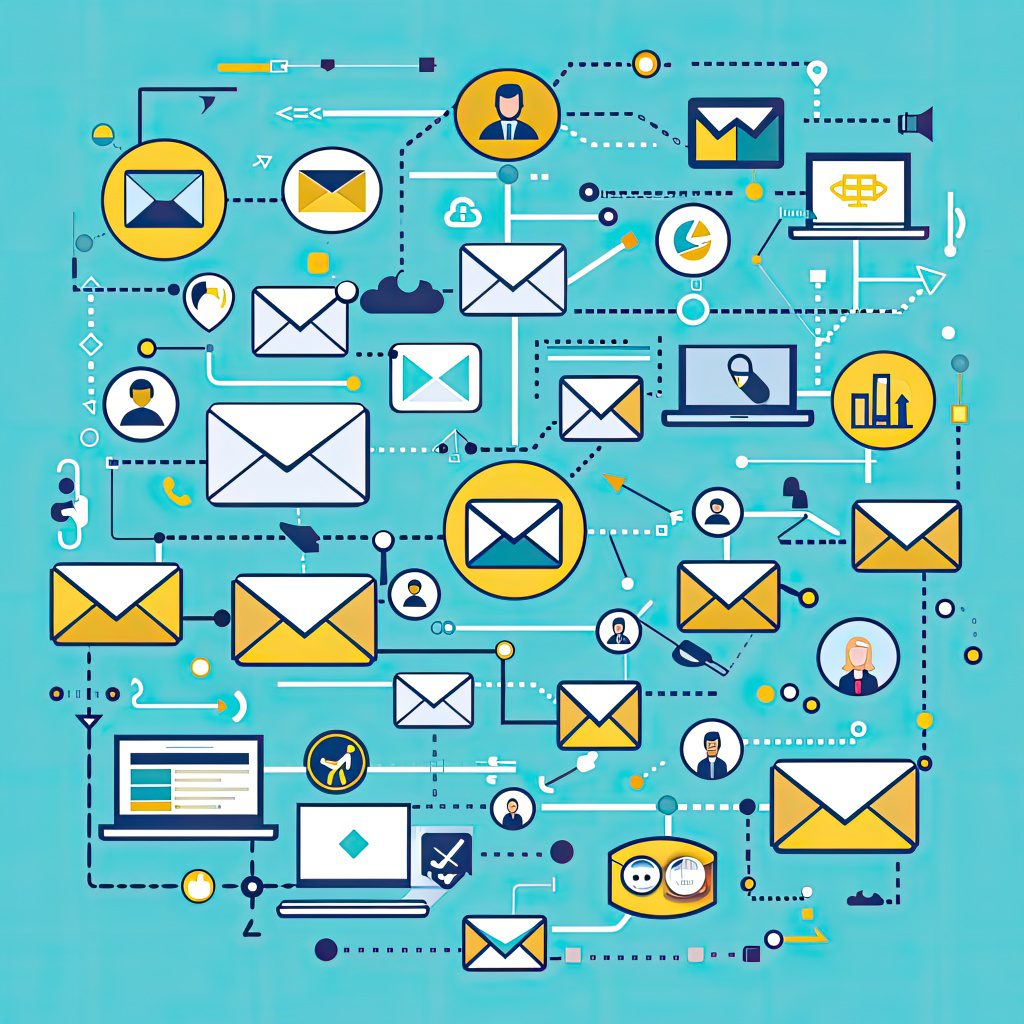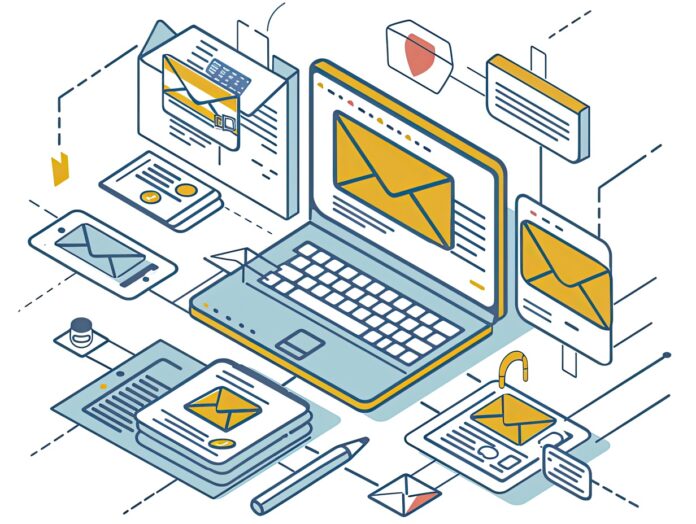Introduction to Email Marketing
Email Marketing remains one of the most effective digital marketing strategies for engaging with your audience, building relationships, and driving conversions. By sending targeted emails to your subscribers, you can deliver personalized content, promote products, and nurture leads. This post will introduce the fundamental concepts of email marketing, its importance, key strategies, and best practices, setting the stage for more detailed discussions on leveraging email campaigns for business growth.
What is Email Marketing?
Email marketing involves using emails to communicate with your audience for various purposes, such as promoting products, sharing news, and nurturing leads. It is a direct and personal way to reach your subscribers, allowing you to tailor your messages to their interests and needs. Email marketing can be broadly categorized into several types:
- Promotional Emails: These emails are used to promote products, services, or special offers. They are designed to drive sales and encourage subscribers to take action.
- Transactional Emails: Transactional emails are triggered by specific actions taken by subscribers, such as purchase confirmations, shipping notifications, and password resets. They provide essential information related to a transaction.
- Newsletter Emails: Newsletters are sent regularly to keep subscribers informed about your brand, industry news, and other valuable content. They help maintain engagement and build long-term relationships.
- Lead Nurturing Emails: These emails are part of a series designed to guide potential customers through the buyer’s journey, providing relevant content and offers at each stage.
Importance of Email Marketing
Email marketing is essential for several reasons:
- Direct Communication: Email allows you to communicate directly with your audience, delivering personalized messages straight to their inbox. This direct line of communication helps build strong relationships with your subscribers.
- High ROI: Email marketing consistently delivers one of the highest returns on investment (ROI) among digital marketing channels. It is cost-effective and allows for precise targeting and segmentation.
- Measurable Results: Email marketing platforms provide detailed analytics, allowing you to track key metrics such as open rates, click-through rates, and conversions. This data helps you measure the effectiveness of your campaigns and make data-driven decisions.
- Audience Segmentation: Email marketing allows you to segment your audience based on various criteria, such as demographics, behavior, and interests. Segmentation enables you to deliver more relevant and personalized content to each subscriber group.
- Automation Capabilities: Email marketing platforms offer automation features that streamline your campaigns and save time. Automated emails can be triggered based on specific actions or events, ensuring timely and relevant communication.

Key Email Marketing Strategies
- Building a Quality Email List: A successful email marketing campaign starts with a quality email list. Focus on growing your list organically by offering valuable incentives, such as exclusive content, discounts, or free resources. Ensure that subscribers have opted in to receive your emails to maintain a healthy and engaged list.
- Segmenting Your Audience: Segment your email list based on factors such as demographics, purchase behavior, and engagement levels. Segmentation allows you to tailor your messages to the specific needs and interests of each group, increasing the relevance and effectiveness of your campaigns.
- Crafting Compelling Subject Lines: The subject line is the first thing your subscribers see, and it plays a crucial role in determining whether they open your email. Craft compelling and concise subject lines that grab attention and entice recipients to open the email.
- Personalizing Your Emails: Personalization goes beyond using the subscriber’s name. Use data to tailor your content, recommendations, and offers based on the subscriber’s preferences and behavior. Personalization increases engagement and makes subscribers feel valued.
- Designing Mobile-Friendly Emails: With the increasing use of mobile devices, it’s essential to ensure that your emails are mobile-friendly. Use responsive design techniques to ensure that your emails look great and function well on all devices.
- Creating Engaging Content: Focus on creating high-quality, engaging content that provides value to your subscribers. Use a mix of content types, such as blog posts, videos, infographics, and user-generated content, to keep your audience interested.
- Incorporating Clear Calls-to-Action (CTAs): Every email should have a clear and compelling call-to-action (CTA) that guides subscribers toward the desired action. Use actionable language and make the CTA stand out visually.
- A/B Testing: Conduct A/B testing to compare different elements of your emails, such as subject lines, content, design, and CTAs. Testing helps you identify what works best and optimize your campaigns for better results.
- Automating Your Campaigns: Use automation to streamline your email marketing efforts. Set up automated workflows for welcome emails, abandoned cart reminders, post-purchase follow-ups, and more. Automation ensures timely and relevant communication without manual effort.
- Analyzing and Optimizing: Regularly analyze your email marketing performance using analytics tools. Track key metrics, such as open rates, click-through rates, conversion rates, and unsubscribe rates. Use this data to identify areas for improvement and optimize your campaigns for better results.
Best Practices for Email Marketing
- Obtain Permission: Ensure that you have explicit permission from your subscribers to send them emails. Use double opt-in methods to confirm their consent and comply with email marketing regulations, such as GDPR and CAN-SPAM.
- Provide Value: Focus on providing value to your subscribers through your emails. Share valuable content, tips, and offers that address their needs and interests. Avoid overly promotional messages that may lead to unsubscribes.
- Maintain Consistency: Consistency is key to building a strong email marketing strategy. Establish a regular sending schedule and stick to it. Consistent communication helps build trust and keeps your brand top of mind.
- Optimize for Deliverability: Ensure that your emails reach your subscribers’ inboxes by following best practices for email deliverability. This includes using a reputable email service provider, authenticating your emails (SPF, DKIM, DMARC), and regularly cleaning your email list.
- Focus on Design and Layout: Create visually appealing emails with a clear and easy-to-read layout. Use headings, subheadings, bullet points, and white space to improve readability. Ensure that your design aligns with your brand identity.
- Test Across Devices and Email Clients: Test your emails across different devices and email clients to ensure that they display correctly. Use email testing tools to preview your emails and identify any formatting issues.
- Monitor Engagement: Keep an eye on engagement metrics, such as open rates, click-through rates, and conversion rates. Identify patterns and trends to understand what resonates with your audience and make data-driven adjustments to your campaigns.
- Encourage Feedback: Encourage your subscribers to provide feedback on your emails. Use surveys, polls, and direct responses to gather insights and improve your email marketing strategy.

Future Trends in Email Marketing
As email marketing continues to evolve, staying ahead of trends is essential for maintaining an effective strategy. Here are some key trends to watch for in the future:
- AI and Machine Learning: AI and machine learning are transforming email marketing by enabling advanced personalization, predictive analytics, and automated content generation. Use AI-powered tools to enhance your email campaigns and deliver more relevant content.
- Interactive Emails: Interactive emails, such as those with embedded videos, polls, and carousels, are becoming more popular. Interactive elements increase engagement and provide a more dynamic experience for subscribers.
- AMP for Email: Accelerated Mobile Pages (AMP) for email allows for dynamic and interactive content within emails. Use AMP to create more engaging and interactive email experiences, such as real-time updates and in-email forms.
- Privacy and Data Security: With increasing concerns about privacy and data security, it’s essential to prioritize data protection in your email marketing strategy. Ensure compliance with regulations and use secure methods for collecting and storing subscriber data.
- Sustainability and Social Responsibility: Consumers are increasingly valuing brands that demonstrate social responsibility and sustainability. Highlight your brand’s efforts in these areas and incorporate eco-friendly practices into your email marketing.
Conclusion
Email marketing is a powerful tool for building relationships, engaging with your audience, and driving business growth. By understanding and implementing key strategies and best practices, you can create effective email marketing campaigns that resonate with your subscribers and achieve your marketing goals. As email marketing continues to evolve, staying informed about the latest trends and adapting your strategy will be essential for maintaining a competitive edge.
Useful Links:
- Mailchimp: Email Marketing Guide
- HubSpot: The Ultimate Guide to Email Marketing
- Campaign Monitor: Email Marketing Best Practices
- Constant Contact: Email Marketing 101



